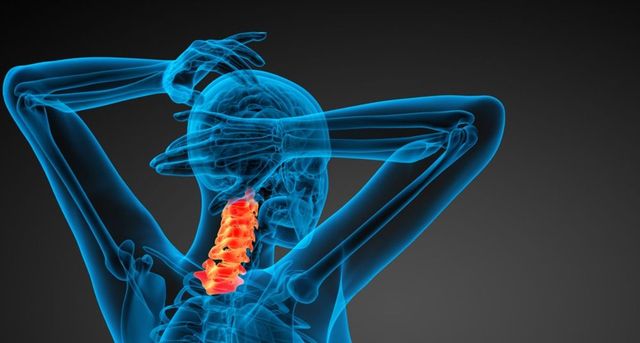The Science Behind Spinal Decompression and Its Role in Pain Relief
Wiki Article
Everything About Spinal Decompression: Reliable Solutions for Spinal Health and Wellness
Spinal decompression therapy has actually become a practical option for those seeking alleviation from numerous spinal problems. This non-invasive therapy targets the source of discomfort, such as herniated discs and chronic back discomfort. Understanding its concepts and applications can shed light on exactly how it advertises overall spinal wellness. What are the particular advantages and techniques associated with spinal decompression? Exploring these concerns might expose beneficial insights for people considering this approach.Recognizing Spinal Decompression Therapy
Exactly what is spinal decompression treatment, and just how does it function? Spinal decompression therapy is a non-invasive treatment focused on eliminating pressure on the spine's nerves and discs. It uses specialized tools to gently stretch the spine, developing unfavorable pressure within the discs. This adverse pressure promotes the repositioning of herniated or protruding discs and encourages the increase of essential nutrients and fluids into the impacted locations.People generally push a mechanized table that sustains the spine while allowing controlled grip. The therapy can target various spinal conditions, including persistent back sciatica, disc, and pain deterioration. Procedure are typically pain-free and can last from 30 to 45 mins. While many people experience instant relief, a collection of sessions might be suggested for best results. Overall, spinal decompression treatment stands for an all natural approach to spinal health and wellness, aiming to recover feature and promote total wellness.
The Science Behind Spinal Decompression
Spinal decompression treatment is grounded in concepts of biomechanics and physiological feedback to pressure adjustments within the spine. This non-invasive treatment aims to minimize spinal disc stress, which can contribute to pain and pain. By using traction techniques, spinal decompression produces an adverse pressure atmosphere within the intervertebral discs. This unfavorable pressure helps with the repositioning of herniated or protruding discs and promotes the increase of important nutrients and fluids, assisting in the healing process.Study suggests that spinal decompression can result in an increase in disc elevation, which might relieve nerve origin compression. Chiropractor. The treatment likewise aims to boost spinal placement, potentially boosting general biomechanical function. Understanding these scientific concepts aids experts use spinal decompression efficiently, making certain that patients obtain targeted care customized to their certain spinal conditions. Generally, the science behind spinal decompression underscores its significance in the field of spinal health and wellness
Benefits of Spinal Decompression
While numerous people seek remedy for persistent pain in the back, the advantages of spinal decompression expand past simple pain monitoring. This healing strategy aids in improving spinal wellness by promoting appropriate placement and decreasing stress on intervertebral discs. Enhanced circulation is another remarkable benefit, as spinal decompression promotes better blood flow to the spine, beneficial surrounding cells and accelerating recovery processes.Additionally, spinal decompression can bring about raised adaptability and boosted variety of activity, allowing individuals to take part in everyday tasks with greater simplicity. Several clients record enhanced total wellness and a reduction in stress degrees, as minimizing pain in the back can considerably improve lifestyle.
Furthermore, spinal decompression might act as a preventative step, aiding to avert future spinal issues by maintaining perfect spinal function. Overall, the complex advantages of spinal decompression emphasize its value in promoting long-lasting spinal health and wellness.
Kinds Of Spinal Decompression Strategies
Numerous strategies exist for spinal decompression, each made to relieve pressure on the spine and improve overall health. One common method is mechanical spinal decompression, which utilizes a traction table to carefully extend the spine, creating negative pressure in the discs. Another approach is hand-operated spinal decompression, done by a chiropractic specialist, who applies regulated pressure to realign the spine and eliminate stress.Furthermore, there are non-invasive therapies such as inversion treatment, where individuals hang upside down to advertise spinal elongation. In addition, exercises that concentrate on enhancing core muscles can add to spinal support and decompression.
Some specialists use innovative techniques like spinal decompression tools, which are engineered to give targeted relief. Each technique intends to enhance spinal alignment, minimize pain, and enhance wheelchair, satisfying the one-of-a-kind needs of people looking for relief from spinal pain.
What to Anticipate During a Spinal Decompression Session
During a spinal decompression session, people can anticipate a series of prep work actions developed to ensure their convenience and safety. The session itself typically includes a mix of therapeutic methods intended at minimizing pressure on the spine. Comprehending these components can assist people really feel extra comfortable prior to and throughout the therapy.Therapy Preparation Steps
As clients get ready for a back decompression session, they can anticipate a thoroughly structured procedure made to assure their comfort and security. Originally, practitioners will carry out a thorough assessment, evaluating case history and present signs and symptoms to tailor the treatment. Patients may be advised to wear comfy apparel and get rid of any precious jewelry that can disrupt the treatment. It's likewise typical for clinicians to explain the technology and techniques used in spinal decompression, making certain people comprehend the process and its benefits. Additionally, clients might be advised to moisturize effectively before the session. This prep work aims to create a favorable environment for spinal wellness, allowing patients to feel protected and informed regarding their treatment journey.Session Experience Review
A spine decompression session normally unfolds in a calm and controlled environment, where clients are positioned comfortably on a specialized table made for the treatment. The specialist begins by clarifying the procedure, making sure the individual recognizes each step. When resolved, mild grip is put on the spine, creating space between the vertebrae to relieve stress on the nerves and discs. Individuals may really feel a moderate stretching sensation, yet pain must be very little. Sessions usually last about 30 to 45 mins, throughout which the practitioner monitors the individual's action. Afterward, patients might receive referrals for follow-up care or exercises to enhance outcomes. On the whole, the experience aims to promote leisure and recovery, fostering a feeling of wellness.Who Can Take Advantage Of Spinal Decompression?
Who stands to acquire one of the most from spinal decompression treatment? People suffering from persistent neck and back pain, herniated discs, or degenerative disc condition are key candidates for this therapy. Those experiencing sciatic nerve pain or feeling numb in the limbs might additionally profit greatly, as spinal decompression can assist relieve pressure on the spinal nerves. In addition, professional athletes recouping from injuries or people with postural issues commonly find relief with this treatment.People looking for a non-invasive option to surgical treatment for their spinal health and wellness problems may take into consideration spinal decompression as a practical choice. It is vital for prospective candidates to speak with health care experts to establish the appropriateness of this therapy for their certain problems. In general, spinal decompression therapy can provide significant advantages for a varied range of individuals, enhancing their general lifestyle and promoting better spinal health and wellness.
Tips for Keeping Spinal Health After Therapy
After undergoing spinal decompression treatment, preserving spinal wellness is essential for long-term wellness. Carrying out normal workout routines, being mindful of posture, and establishing an ergonomic office can considerably contribute to a healthier spine. These techniques not only sustain recuperation but likewise aid prevent future issues.
Normal Exercise Routines
Keeping spinal health and wellness adhering to treatment is essential for lasting healing and overall well-being. Normal workout regimens play an important role in this procedure. Engaging in low-impact tasks such as swimming, strolling, and biking can help enhance the muscles supporting the spine, enhance adaptability, and enhance general flexibility. Incorporating core-strengthening exercises is specifically useful, as they give security and support to the spinal column. In addition, gentle stretching regimens can reduce tension and advertise leisure in the back muscles. It is necessary to seek advice from a healthcare expert prior to beginning any type of brand-new exercise program to ensure it lines up with specific recovery objectives. Uniformity in these activities fosters an aggressive technique to spinal wellness, assisting in the avoidance of future issues.Posture Recognition Techniques
A strong recognition of posture can substantially impact spinal health throughout the recovery procedure. Individuals must knowingly maintain an upright placement, guaranteeing that the head is aligned with the spine and shoulders are kicked back. Consistently signing in with one's stance throughout the day can help reinforce good routines. When resting, making use of an encouraging chair that advertises back support is important. Additionally, standing for extended periods calls for weight distribution between both feet and involving the core muscles. Practicing mild stretches and mobility workouts can additionally improve awareness of stance. Mindfulness methods, such as deep breathing, can assist in recognizing stress and advertising relaxation in the back. Carrying out these techniques fosters a proactive approach to spinal health post-treatment.Ergonomic Office Configuration
While an ergonomic work space might look like a deluxe, it is more info vital for those recuperating from spinal issues. A well-structured setting can considerably help in keeping spinal health and wellness. Crucial element include a chair with back support, which urges proper stance, and a desk elevation that allows joints to rest at a 90-degree angle. In addition, computer displays ought to go to eye degree to minimize neck pressure. Regular breaks to stand and extend are vital, as extended sitting can intensify discomfort. Footrests can also boost circulation and decrease pressure on the lower back. By focusing on these ergonomic concepts, individuals can develop a supportive office that cultivates recovery and advertises long-lasting spinal health, eventually boosting total productivity and comfort.Regularly Asked Concerns
Exactly How Long Does Spinal Decompression Treatment Normally Take to Program Results?
Spinal decompression therapy typically takes a number of weeks to reveal obvious outcomes. Many clients experience enhancement within 4 to 6 weeks, depending on individual problems and adherence to the advised treatment strategy detailed by healthcare professionals.Exist Any Kind Of Adverse Effects Related To Spinal Decompression Treatment?
Spinal decompression treatment might create light adverse effects, such as short-lived discomfort, muscular tissue spasms, or pain after treatment. Nonetheless, these signs are usually short-term and solve rapidly, enabling clients to proceed their treatment effectively.Can Spinal Decompression Therapy Be Done in the house?

Is Spinal Decompression Safe for Expecting Females?
Spinal decompression is typically thought about harmful for pregnant ladies because of possible risks. It is important for pregnant mommies to consult health care specialists prior to undergoing any type of spinal therapies to guarantee the security of both mommy and baby.Exactly how Often Should I Go Through Spinal Decompression Treatment for Best Results?
Generally, people should undergo spinal decompression treatment a couple of times a week for finest results. Nonetheless, the frequency may differ based on specific problems and ought to be established by a health care specialist.Spinal decompression treatment is grounded in principles of biomechanics and physical action to pressure adjustments within the spinal column. Understanding these scientific principles assists practitioners apply spinal decompression efficiently, ensuring that patients receive targeted care tailored to their certain spinal problems. Spinal decompression may offer as a preventative measure, helping to avert future spinal problems by preserving suitable spinal feature. Individuals looking for a non-invasive option to surgical procedure for their spinal health concerns may think about spinal decompression as a feasible alternative. After undertaking spinal decompression therapy, maintaining spinal health is essential for long-term well-being.
Report this wiki page